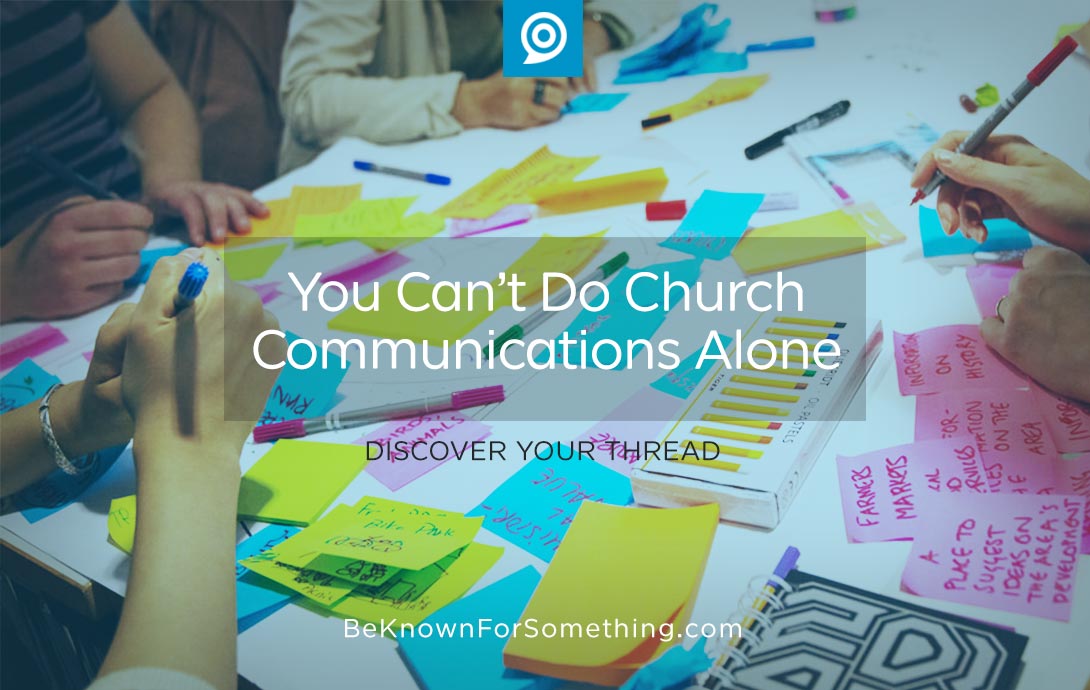You Can’t Do Church Communications Alone

Remember when most churches’ total communications to their congregations consisted of a sign that was changed weekly, a simple newspaper ad with service times, and an informative bulletin (worship guide)? The sign and ad were intended for community outreach (along with an expensive annual yellow pages ad). The bulletin was “the” place for all the details.
Those were the good ol’ days. One person in the church could do it all.
But then church programs grew, along with the details for each event; so the bulletin expanded. Some added MANY inserts. Churches started to tape posters around the church. All to help people know what’s going on. Announcement time in service became a long-winded, competition time.
Now we have information-seeking congregants that stopped reading long, detailed paragraphs. They don’t like picking up printed paper or weeding through a cluttered bulletin board. Most of them only want the specific information when they are looking for it.
People want church communications wherever they are, when they need it!
They don’t carry the bulletin around with them, but they carry mobile devices that are connected to the internet. Now, simple church communications require:
- An up-to-date, responsive website (for mobile and desktop) that uses consistent keywords that will allow you to be discovered by the search engines. And make sure your content is updated regularly so search engines see you as current.
- A regular email that speaks to your audience. The more segmented the better (so it delivers only what they want). It should have lots of links to the details on your website.
- Social media entertainment channels. Places that keep engaging your followers with content that “feels” like you. Not just promotion. And all your engaged people should occasionally be given links to (you guessed it) your website.
- MOST IMPORTANT: You need a team of people doing all of this. The right people doing the right things, and they need to have the right creative mix.
Want 25 Game-Changing Resolutions?
Related Posts

3 Church Leadership Skills That Transform Your Ministry
You didn’t accept a call to ministry just to maintain the status quo. You were called to lead to inspire,

How to Create a Church Marketing Strategy That Reaches Your Community
You’ve been called to lead a church that makes a difference in your city. That means developing a clear church

Top 10 Church Digital Marketing Strategies for 2026
What’s Changing, What’s Working, and What’s Next 2026 will be a year of rapid change for church digital marketing strategies

